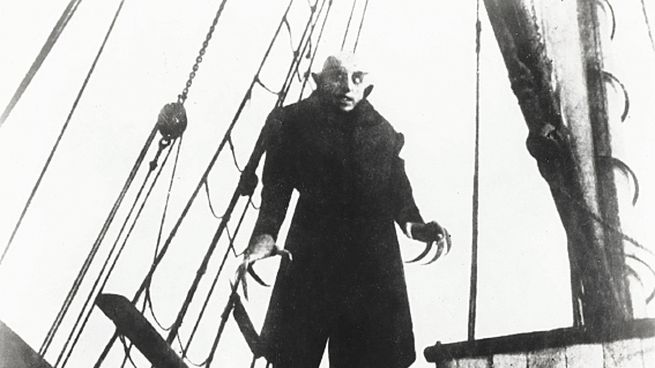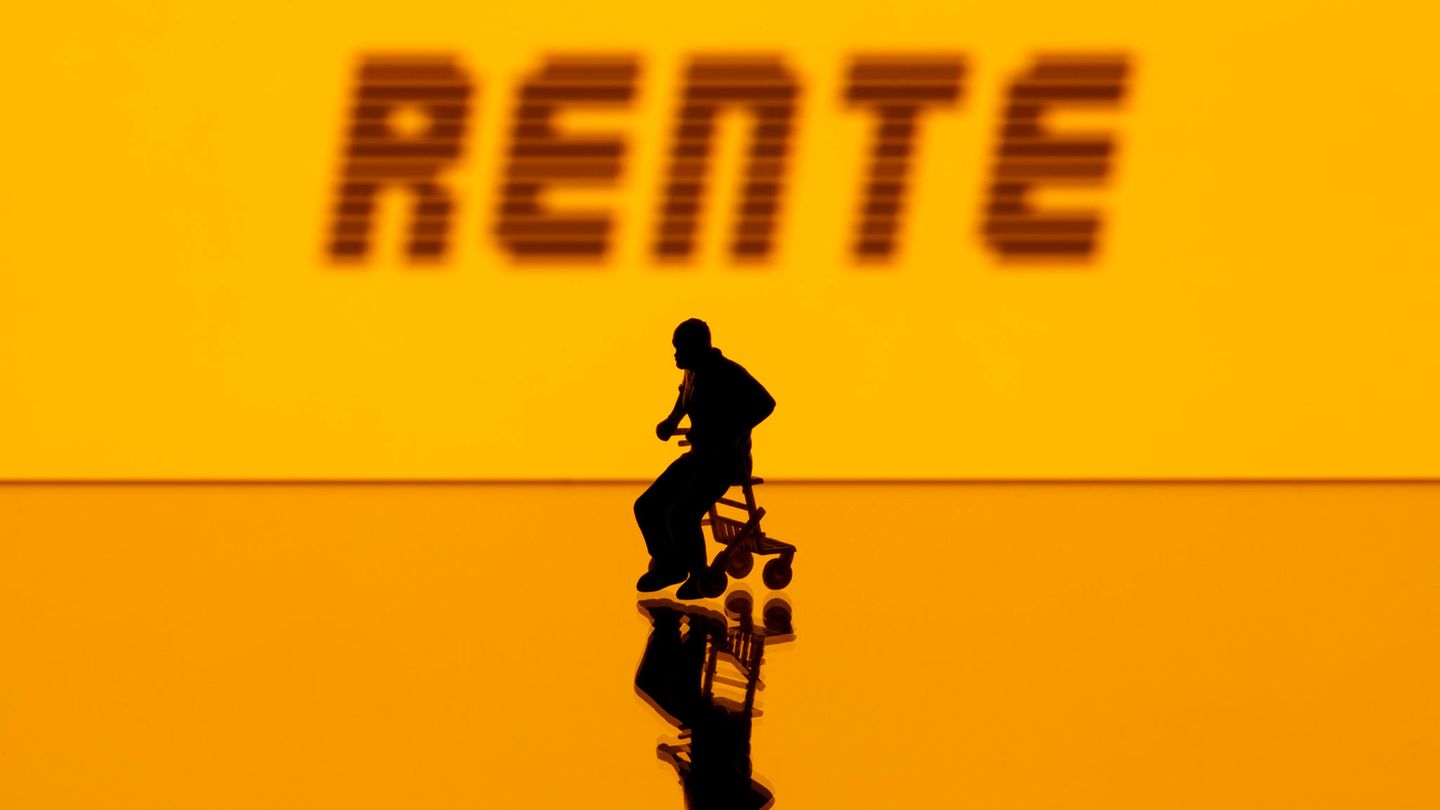Directed by Robert Eggers and with Bill Skarsgård as the vampire, it will be the one that comes closest to the original “Dracula.”
nosferatu. Max Schreck as Count Orloc (Dracula) in the original 1922 film by FW Murnau.
Robert Eggers, director of “The Northman” (2022), “The Lighthouse” (2019) and “The Witch” (2015), completed the filming of his most ambitious bet in Prague: a new “Nosferatu”, which will continue the model of the silent original by Friedrich Wilhelm Murnau (1922) and that of Werner Herzog (1978), which in turn traced the historical feature film almost shot by shot. A new attempt to bring to life on the screen this story that, in its origin, plagiarized the text of Bram Stoker’s “Dracula” but which, far from becoming something embarrassing, founded a genre, has its risks.
The new film, whose premiere is scheduled for next year (in truth, there was a huge delay due to the pandemic, since it was wanted to be released in 2022, for the centenary of Murnau’s film) has a script by Eggers himself and will be distributed worldwide by Universal Pictures.
The content you want to access is exclusive to subscribers.
In the new version, the role of Count Orlock (the name given to Dracula) is played by Bill Skarsgård (star of both parts of “It”), Lucy, who will be called Ellen here, is Lily-Rose Depp; Mina, called Anna, is Emma Corrin, and her husband Friedrich is Aaron Taylor-Johnson.


Eggers’ book deviates from both versions of the film and is closer to Stoker’s original, since there is not just one woman obsessed with the vampire but two (they were Mina and Lucy in the novel). Willem Dafoe, who worked on “The Lighthouse” with the same director, will play Professor Albin Eberhart Von Franz, who will be Van Helsing.
In fact, the first film about Dracula is a year before “Nosferatu”. It was the Hungarian silent film “The Death of Dracula” (1921), although it did not follow the plot of Stoker’s novel. Directed by Karoly Lajthay, it centered on the visions of a woman in an asylum where she had a cellmate, Count Dracula, who may be real or just another nightmare. Murnau’s “Nosferatu” was the first adaptation of Stoker’s novel, although when Stoker’s estate was denied permission to film it, the names of the characters were changed. Count Dracula became Count Orlock (Max Schreck), Jonathan Harker became Thomas Hutter (Gustav von Wangenheim), Mina Harker became Ellen Hutter (Greta Schröder), Renfield became Knock (Alexander Granach) and Abraham Van Helsing became Professor Bulwer. (John Gottowt), who had a much smaller role than he played in all the Dracula films, especially when he was played by Peter Cushing.
The plagiarism of the novel, however, was unconcealable, so Murnau’s producers found themselves involved in legal problems that ended up making the cinematic masterpiece a commercial failure. To make matters worse, a court ruling was issued ordering all copies to be destroyed. Luckily, some were preserved, allowing an all-time cult classic to survive. Since the film’s centenary, tributes have continued. The Berlin gallery Scharf-Gerstenberg Collection mounted the exhibition “Phantoms Of The Night -100 Years Of Nosferatu” that analyzed this immortal film from all angles, not just the cinematic one. as its monstrous protagonist, which many understand as the masterpiece of German expressionism and which featured other great filmmakers. such as Fritz Lang (“M – The Vampire”, “Metropolis”) and Robert Wiene (“The Cabinet of Dr. Calegari”). The exhibition charged an admission fee, but those who wanted to donate blood had free entry. An excellent resource for solidarity campaigns for this type of donations. The Berlin exhibition went far beyond cinema and although it showed all the poster art and the original release of “Nosferatu”, as well as its plot differences with Bram Stoker’s novel, alluding to the fact that Murnau’s vampire, far from the Latin Gardelian lovers like Bela Lugosi who would come later, in some way represented the xenophobic and even anti-Semitic prejudices of the time. The exhibition also explains how the epidemic that had decimated Europe at the end of the First World War, the so-called Spanish Fever (which was mentioned so much during the Covid 19 pandemic as a precedent), had influenced Murnau, hence the presence of documentary material from rats, hyenas and even microbes taken under a microscope that Murnau combined with the image of the vampire. Just like other expressionist masterpieces that recently turned 100 years old, such as the aforementioned “The Cabinet of Dr. Caligari” by Wiene (1919) and the much imitated “The Three Lights or The Tired Death” by Frtiz Lang, which due to its special effects It was very avant-garde for 1921 and was immediately copied in Hollywood by Douglas Fairbanks and Raoul Walsh for their “Thief of Bagdad.” Some experts dare to claim that it even influenced George Lucas’ “Star Wars.”
“Nosferatu” had reruns, special screenings and reissues around the world during 2022, including theatrical releases and even a brand new Israeli blue ray, although the cultural poverty of streaming is always evident by its denial of all types of classic cinema, nor talk about the masterpieces of silent cinema. Beyond the plastic strength and visual originality of Murnau’s “Nosferatu” there is something that is clear and that is the attraction that the character of Dracula and vampires in general exert on the public of all times, to the point that the Count Stoker’s remains one of the most filmed characters in film history along with Tarzan and Sherlock Holmes.
In 1978, as mentioned above, Werner Herzog directed an obsessive, almost stop-motion recreation of FW Murnau’s “Nosferatu,” starring Klaus Kinski, Bruno Ganz and Isabelle Adjani. In 2000, E. Elias Merhige directed the film “Shadow of the Vampire,” a fantastical version of the “making” of “Nosferatu” that posited that its original actor, Max Shreck (played by Willem Dafoe), was an authentic vampire who played of Murnau (John Malkovich), one of his victims. That was inspired by the almost zero biographical data that there is about Shreck in the history of cinema. In 2020, a new “Nosferatu” appeared, but animated.
Source: Ambito
I am an author and journalist who has worked in the entertainment industry for over a decade. I currently work as a news editor at a major news website, and my focus is on covering the latest trends in entertainment. I also write occasional pieces for other outlets, and have authored two books about the entertainment industry.




